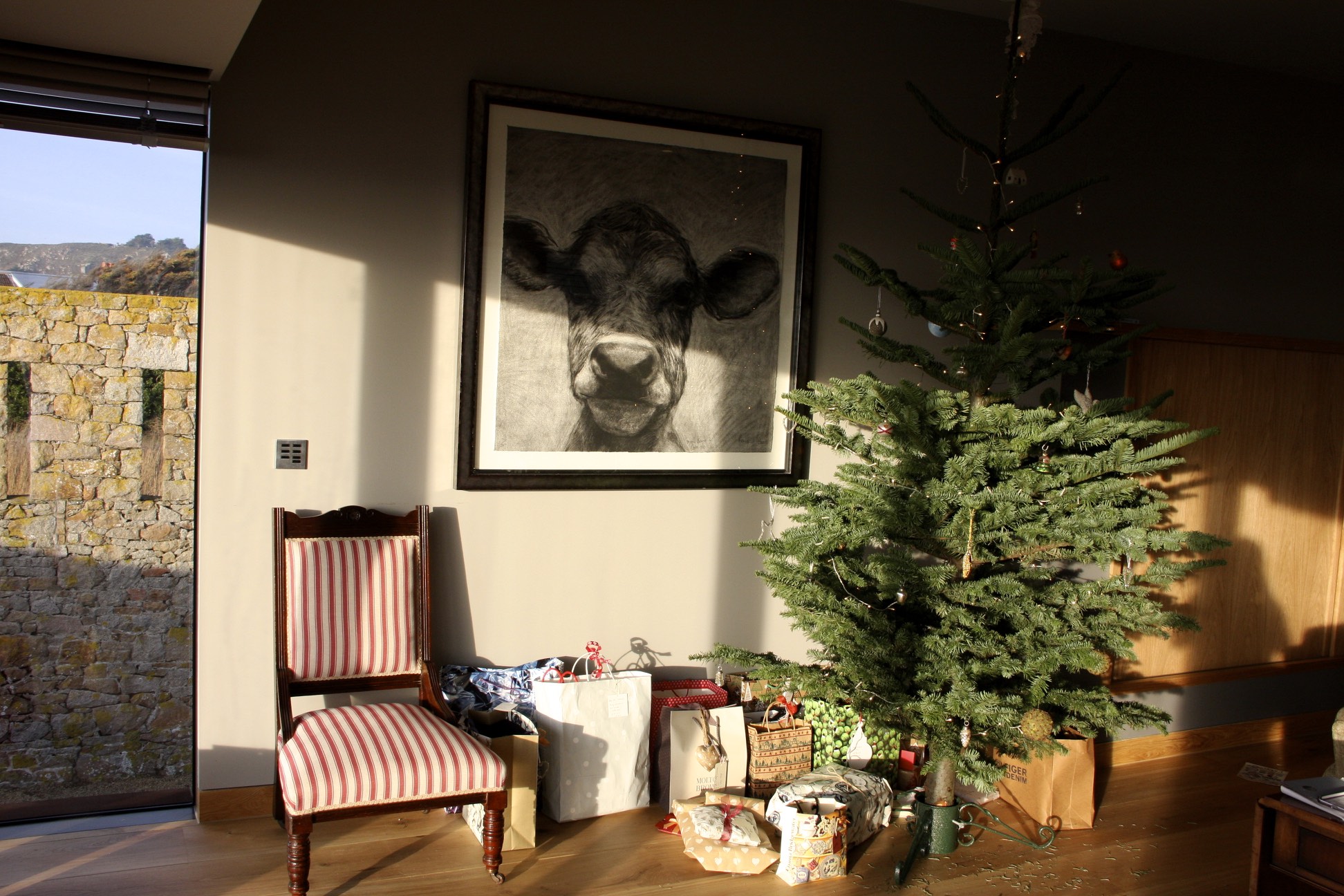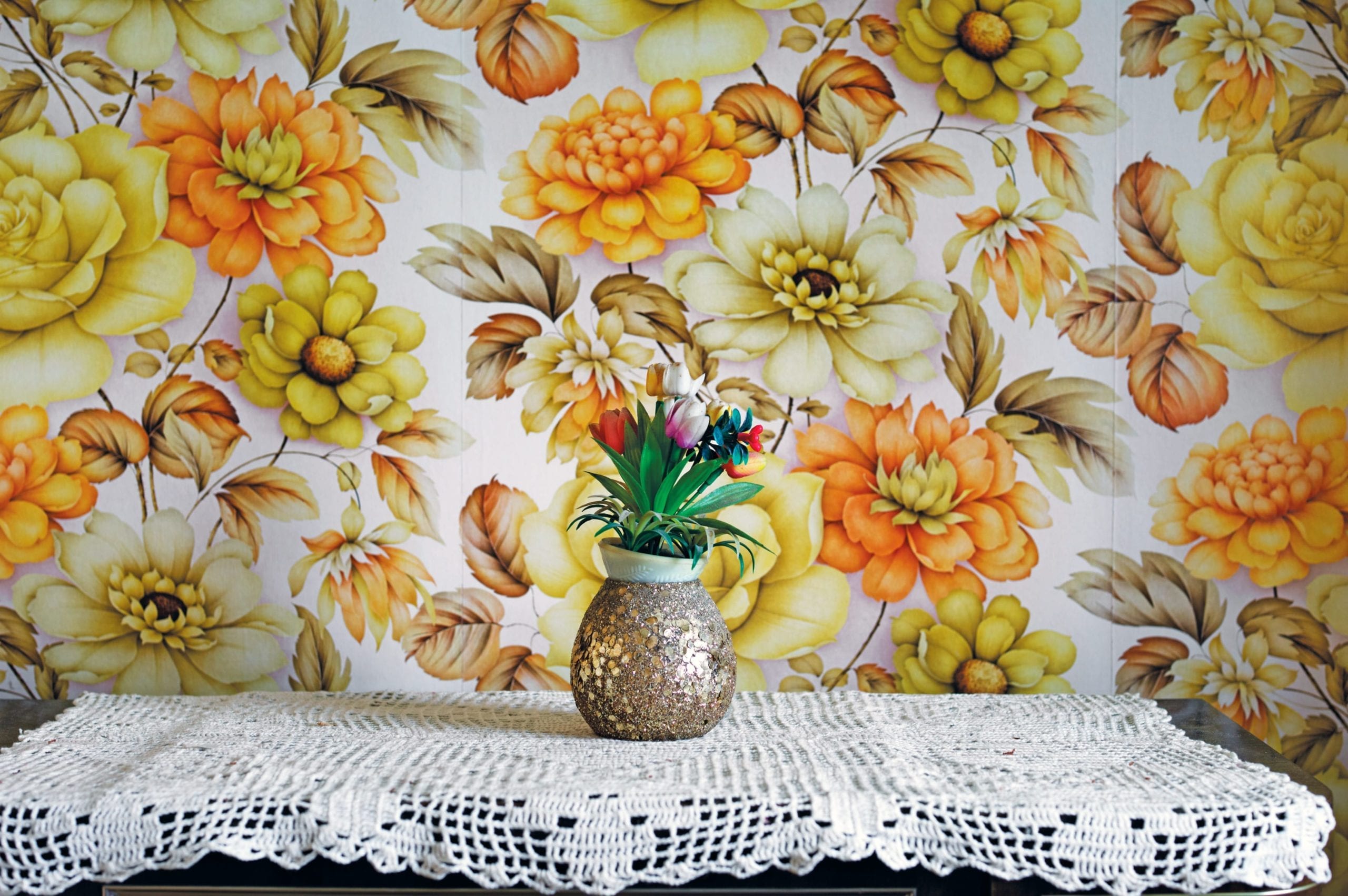“….‘For every minute you are angry you lose sixty seconds of happiness’ is a template model for what critical engagement should try to achieve in our day and age: forget the ‘winners’ and ‘losers’ and provide examples of people who operate in a different forcefield. People who are not grasping, not filled with self-importance and not embittered, people with a profound understanding of who they are and what they stand for, something that cuts across all cultures.” – Hans Aarsman
Background
‘For every minute of anger you lose sixty seconds of happiness’, is a photo-book made by British photographer Julian Germain, published in 2005. The subject of the photo story is a man named Charles ‘Charlie’ Snelling, an elderly man who owned and lived in a small house/flower shop.
Germain meet Charlie in April, 1992. Germain, on his way to a football match to photograph, stopped into Charlie’s flower shop because he was attracted to its unusual orange and yellow colour. He brought some flowers andd started chatting to Charlie, who inivited Germain to look at some old photos he took of his late wife. Germain stated later on: “I was touched by the way he photographed his wife. It seemed to me to be very intimate, open and totally unpretentious” .
Charlie was an elderly man who lived alone since his wife died. Charlie lived a very simplistic life, with passions for flowers, music, crosswords and photography. Charlie, as Germain remarks “was a simple, gentle man. He loved flowers and surrounded himself with flowers. He loved colour and surrounded himself with colour”. Charlie lived out the last years of hiss life in his small seaside town, a quiet and contemplative existence. He collected flowers and studied the names of flowers, as well as collecting old polaroid snaps he took of his wife ad putting them into colourful photo albums.
Over the course of 8 years, Germain visited Charlie off and on, sometimes a week at a time, and sometimes going months without seeing him. Germain claims that the photographs he took were not for a specific project but meerly for fun, documenting the time he spent with Charlie. When he died in 2000, Germain started the process of gathering the images he took during his visits to see Charlie. Germain finished this process a few years later and published his final images in 2005, entitled ‘For every minute you are angry you lose sixty second of happiness’, one of Charlie’s regular sayings.
‘For every minute of anger you lose sixty seconds of hapiness’ is considered one of Germain’s most famous series. It is a very personal and inspiring account of his close friendship he gained by chance with Charlie, a shy, quiet old man. Charlie left a personal mark on Germain: “He showed me that the most important things in life cost nothing all all. He was my antidote to modern living”.
Style of Photography
The style of photography by Germain in this book is Vernacular, a deliberately ‘amateur’ appearing, rustic style. Vernacular style photography is done to evoke a raw, subjective mood into images, making them powerful in terms of the mood and feel they evoke not meerly aesthetic considerations. It is quite hard to pull off successfully and requires careful planning/consideration.
Unlike some vernacular photographers such as Richard Billingham (Rays a Laugh), Germain has a much more subtle and considered approach to taking vernacular photographs. In contrast to Billingham for example, Germain will stage his images beforehand, creating his desired composition, whereas Billingham will shot candidly, relying on accidents to make his work interesting.

Overview and Evaluation
Germain’s images in ‘For every minute a anger you lose sixty seconds of happiness’ are very subtle and poetic in what thy convey. It is a sensitive interpretation of a man in his final years of life, living alone but contended in his simplistic way of life. The theme of flowers is a recurring theme in the story and Germain uses it as a basis to tie different directions/themes of the narrative together.
I find the story conveyed in ‘For every minute a anger you lose sixty seconds of happiness’ to be very entertaining. There is a very natural flow to the storyline, achieved through the subtly of Germain’s style.
The story is very much a retrospective look into Charlie’s past, and the inclusion of archival photographs which Charlie took himself is Germain’s way of representing this concept. Archival images a synonymous with Germain’s style and it is not the first time he has used it. Germain’s use of archival images in this book is something which I can explore for my own study as like the story, mine also incorporates a retrospective look into the past.
Analysis of Images

This photograph is a portrait of Charlie holding two flowers. It is a formal portrait, carefully considered in terms of form and composition. It very much relates to the theme of flowers, a passion of Charlie’s.
The lighting in this image is soft. This is caused by the curtain restricting how much light enters the room, and subsequently diffusing it. The softness of the light makes for a light and positive atmosphere. This mood evoked serves to reflect the optimism which Germain acclaims Charlie to have. It is a very ‘happy’ image, firstly through the mood it evokes and secondly through the direct and confident manner in which Charlie holds up the two flowers. It is clear that Charlie enjoys collecting and looking at flowers, a personal hobby he entertained a great deal of his time with. Therefore this image is very positive because it represents Charlie as happy and enjoying himself.
There is a vibrant and colourful mood created as a result of various different components of the image, such as, the flowers and wallpaper. The colourful atmosphere is visually striking and establishes a sense of depth to the image. The presence of these bright, vibrant colours serves to maintain the positive atmosphere created through the lighting.
The style of this image is very simplistic. This is attainable because of the formal manner in which Germain has considered composition. He has created a sense of structure and order; firstly through positioning the subject in the centre of the frame; secondly through the sense of balance created through holding up the two flowers on either side; and thirdly because of the fact that the image is composed with a clean and minimalist background. These components make for a well balanced and orderly image that nevertheless evokes a strong mood.

This is a still-life image of Charlie’s dresser. In this image is a flower-themed wallpaper, a note by Charlie and an old polaroid snap of Charlie’s late wife.
This photograph incorporates to different contexts, the polaroid snap and the hand written note. This effect is known as ‘layering’ as the photographer is combing two separate objects to create a single image. This makes for a somewhat complex image as the viewer’s focus is constantly shifting to-and-throw from the different themes. The strong background (orange at the bottom and the flowery pattern at the top) helps to link this to themes together by creating strong visual base.
This polaroid snap of Charlie’s wife is an example of Germain making use of old archival images to enhance his visual narrative of his photographs. He is engaged in the archive in a creative way, photographing the pre-existing images he has, thereby including the image as an aspect of this new, original image. By engaging in the archive in this contemporary manner, the photographer is bringing to life these retrospective themes. On a deeper level, this is interesting because the photograph in question, a portrait of Charlie’s dead wife, is metaphorically being ‘brought back to life’.
The handwritten note is one which Charlie wrote himself as Germain recalls”Charlie would leave little notes to let customers know where he was”. The note therefore is a way of the viewer gaining a sense of the quirky and gregarious nature of Charlie, steep in politeness and tradition. The fact the note is handwritten means that it is very personal. It also gives Charlie as sense of direct input into the photograph because what he has written has gone into the image thus effecting the viewers interpretation of such. Along with the polaroid this image is very much a construction of Charlie input as observed by Germain.
























